From top to bottom, the way your home is constructed and designed can have long-term effects on the home’s durability, design appeal, and resale value. Selecting the best flooring types for your home is one of the best ways to provide a solid foundation underfoot for years to come.
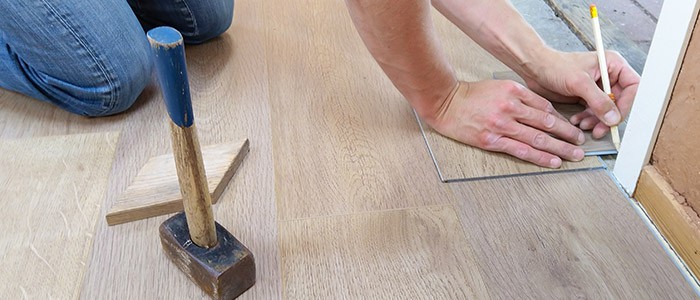
Types of Floors
Want to skip ahead to a specific floor? Click the links below to jump down to each individual floor type.
- Hardwood Flooring
- Engineered Hardwood Flooring
- Bamboo Flooring
- Laminate Flooring
- Vinyl Flooring
- Linoleum Flooring
- Ceramic Tile Flooring
- Porcelain Tile Flooring
- Cork Flooring
- Carpet Flooring
- Rubber Flooring
- Concrete Flooring
Floor Reviews & Comparisons
Our team is hard at work on new flooring reviews, guides, and comparisons. You can find a complete list of our in-depth flooring research here.
- Vinyl Plank Flooring Review
- Vinyl Plank vs. Laminate
- Vinyl Plank vs. Vinyl Tile vs. Vinyl Sheet
- Hardwood vs. Wood-Look Tile
What Floor Types Are Best In What Rooms?
Knowing what floor types are best for which rooms comes down the natural properties of each flooring material, as some are better suited for certain areas than others.
The table below breaks down each flooring type on a room-by-room assessment:
| Kitchen | Bathroom | Laundry | Entryway | Common Room | Gym | |
|---|---|---|---|---|---|---|
| Hardwood | Maybe | No | Maybe | Yes | Yes | Yes |
| Engineered Hardwood | Maybe | No | Maybe | Yes | Yes | Yes |
| Bamboo | Maybe | No | Maybe | Yes | Yes | Yes |
| Laminate | Maybe | No | Maybe | Yes | Yes | Yes |
| Vinyl | Yes | Yes | Yes | Yes | Yes | Yes |
| Linoleum | Yes | Yes | Yes | Yes | Yes | Yes |
| Ceramic Tile | Yes | Yes | Yes | Yes | Yes | Yes |
| Porcelain Tile | Yes | Yes | Yes | Yes | Yes | Yes |
| Cork | No | No | No | Yes | Yes | Yes |
| Carpet | No | No | No | Yes | Yes | Maybe |
| Concrete | Yes | Yes | Yes | Yes | Yes | Maybe |
| Rubber | No | No | Yes | Yes | No | Yes |
1. Hardwood Flooring
Hardwood flooring is traditionally one of the best floor types if you’re looking for something long-lasting and versatile. Hardwoods extend beyond design styles and generations.
One-hundred-year-old hardwoods can be discovered, sanded, resurfaces, and sealed to look brand new again. Few other flooring types have that kind of lifespan.

Cost per sf; Installed
$6-22/sf
Ease of Install
Moderate
Lifespan (in yrs)
25-50
What’s To Like
- Durability. Hardwood floors are extremely durable against many forces of normal wear and tear. Scratches can be restored and most messes are easily cleaned.
- Allergy-friendly. If you’re prone to allergens, hardwoods are a great option due to their hard surface nature. Unlike carpet, which allows deep fibers for allergens to hide, hardwoods can be easily cleaned and when there’s a mess, you’ll be able to see it and address it quickly.
- Design universal. Regardless of what your design style is, hardwoods are for everyone. They are one of the design world’s best “neutral” and pair effortlessly with a wide range of designs from traditional to more modern aesthetics.
What’s Not So Good
- Susceptible to water damage. Although hardwoods are extremely durable, water is their kryptonite. When water is present, hardwoods are prone to cupping which pulls the sides of the planks up and can crease large cracks or creaking on the floor.
- Susceptible to settling. In new construction homes, hardwoods will likely settle along with the rest of the house. This can create gaps in the floor or even cracks in the actual planks.
- Expensive. Depending on the style you select, hardwoods can be expensive, especially when laying in large areas.
- Hard to match. Unless you plan on sanding and resurfacing all existing hardwoods, it can be hard to extend hardwoods into a small room and get a good match. Certain grain patterns are more forgiving, like oak, while others are extremely difficult, like maple.
Types
Hardwoods come in a few different styles, but the three main factors that affect the look of hardwood are:
- Plank Width
- Stain Color / Sealant
- Wood Type
- Plank Width: Most planks are available in 2-5″ widths
PRO TIP: Wider planks tend to look more modern, while thinner planks take on a traditional feel)
- Stain Color / Sealant: Manufacturers offer a variety of stain colors or natural sealants. You can use stain to make an inexpensive light wood feel dark or to play up the natural color variation of a natural wood
PRO TIP: For minimal color variation, check out red oak, maple or walnut. For more variation, look into hickory or tigerwood.
- Wood Type: When selecting the wood type, consider grain style, hardness, price, and color. The first three factors tend to supersede color since a good stain can alter the color of most hardwoods.

Some of the most popular types of hardwood floors include:
- Red Oak
- White Oak
- Hard Maple
- Walnut
- Teak
- Ash
- Pine
- American Cherry
RELATED: For a cheaper floor you can install yourself, check out wood-look LVT (luxury vinyl laminate). This isn’t your grandma’s laminate floor!
Costs
On average, hardwoods cost homeowners between $6-22 per square foot installed. Installing hardwoods can be a difficult and time-consuming job that is beyond the skillset of many DIYers.
QUOTE – Click here to get an instant quote from local contractors and professional installers in your area.
2. Engineered Hardwood Flooring
Engineered hardwood floors are a man-made product that are essentially a more stable version of traditional hardwoods. An engineered hardwood is made up of many layers of natural materials, but bonded together to make it a man-made product.
The top layer is always a hardwood veneer, but the inner layers could be plywood, particleboard, cheaper hardwood, or other various fibers. These layers are individually glued together to create an incredibly strong flooring material, with the look and feel of hardwoods.

Cost per sf; Installed
$6-22/sf
Ease of Install
Moderate
Lifespan (in yrs)
25-50
What’s To Like
- More stable. Engineered hardwoods are more stable than traditional hardwoods due to their built-up construction. The cross fibers in a plywood core are less likely to cup or warp, as traditional hardwood might.
- Easier to match. If you are thinking of adding hardwoods to your space later, but can’t do it all at once, engineered hardwoods are a good option. Engineered hardwoods are easier to match in finish and grain pattern due to their man-made nature.
What’s Not So Good
- Expensive. As with traditional hardwoods, engineered hardwoods are still pretty expensive compared to other flooring options. The price variance between engineered hardwoods and traditional hardwood is negligible.
- Lower quality core. Engineered hardwoods are unique in that you pay a similar price to solid core hardwood, but you have a pretty low-quality core, as plywood is an inexpensive building material.
- Susceptible to water damage. Because the top is still hardwood, even engineered hardwoods are susceptible to water damage. The built core could help prevent serious damage, but you may want to think twice before using this type of floor in wet locations.
Types
Similar to traditional hardwoods, engineered hardwoods are available in various veneer styles, grain patterns, and colors.
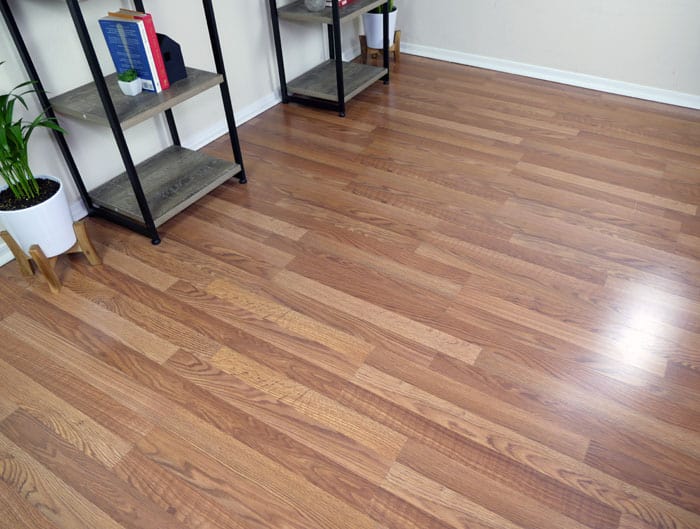
With hardwoods, you have the natural wood + stain / sealant = finished product.
With engineered hardwoods, the stain and finish are already applied before the product is sold. Again, this makes it easier to match if you decide to add additional hardwoods later.
RELATED: How to clean engineered hardwood flooring
Costs
On average, engineered hardwoods cost homeowners between $6-22 per square foot installed. This price is on par with traditional hardwoods in most cases and provides some nice advantages.
QUOTE – Click here to get an instant quote from local contractors and professional installers in your area.
3. Bamboo Flooring
Bamboo flooring is sort of like the distant cousin to traditional hardwoods — looks sort of similar, but you don’t hear about it much, except for around the holidays.
Unlike hardwoods or even engineered hardwoods which are made of wood, bamboo is actually made of a type of grass. The grass is sliced or shredded and then adhered together to form bamboo boards and planks.

Cost per sf; Installed
$10-20/sf
Ease of Install
Moderate
Lifespan (in yrs)
25-50
What’s To Like
- Environmentally friendly. Bamboo is known for its fast-growing tendencies and structural stability. Since bamboo grows faster than trees, it can be a more environmentally-friendly choice over traditional hardwoods.
- Contemporary or modern. The style of bamboo flooring can put a contemporary or modern spin to the design feel of your home.
- Durable & stable. Bamboo flooring has the durability of hardwoods with the stability of a man-made engineered product.
What’s Not So Good
- Expensive. Although cheap bamboo flooring exists, low costs generally equates to low quality. A good quality bamboo floor can be just as much as a traditional hardwood floor.
- Strong grain pattern. Although it is more uniform than traditional hardwoods, bamboo floor has a strong linear or horizontal grain pattern. If you want a softer grain, bamboo flooring may not be the best option for you.
- Can be harder to source. You likely won’t find many bamboo flooring at your local home improvement shop. Due to the lack of material, it can be hard to source a high quality bamboo locally, which means you may end up spending more just to get the product to your doorstep.
Types
There are three types of bamboo flooring, each providing a unique look.
- Vertical: has a thin linear look and feels uniform
- Horizontal: has a bit more pattern as it shows the wider joints of the bamboo shoots
- Strand woven: weaves the grass together in crossing directions for an interlocked, strong substrate. This is the strongest and most expensive type of bamboo flooring.
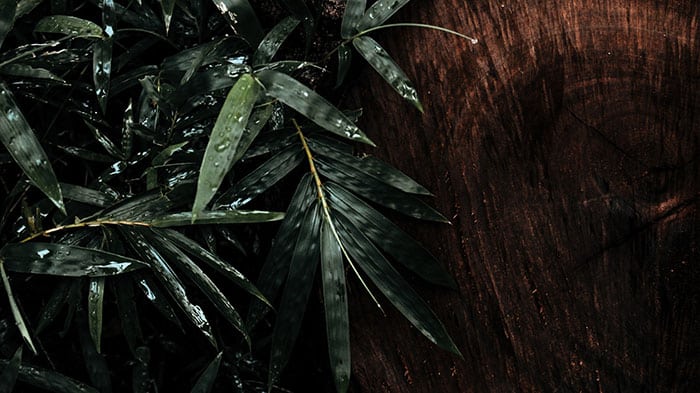
You can get a traditional bamboo floor or a laminated bamboo floor which uses a top layer of bamboo mixed with other composite substrate layers (similar to the construction of engineered hardwoods).
Costs
On average, bamboo flooring can cost between $10-20 per square foot installed.
- For the least expensive bamboo floor, you’ll want horizontal bamboo with a floating installation (little to no adhesive used).
- Or for a moderate bamboo floor, check out vertical bamboo with a glue-down installation.
- For the highest quality bamboo floor, consider strand woven bamboo with a nail down installation.
QUOTE – Click here to get an instant quote from local contractors and professional installers in your area.
4. Laminate Flooring
Laminate flooring is 99% wood—albeit pressed wood and not solid wood like traditional hardwoods. The composition is broken down into 4 essential layers. The layers are as follows:
- Back layer: wood substrate that provides durability and structural integrity to the material
- Core layer: wood substrate that is a high-density wood composite product; protects the back layer from moisture
- Image layer: a thin layer that contains a high-resolution photograph of the floor aesthetic’ laminate can look like hardwoods, stone, tile, or concrete.
- Wear layer: top power that is a clear layer of aluminum oxide that protects the floor from wear and tear, like fading, stains, and scratches

Cost per sf; Installed
$3-8/sf
Ease of Install
Moderate
Lifespan (in yrs)
10-15
What’s To Like
- Durability. Laminate is a man-made product made up of pressed wood and composite. The top layer provides the look of wood, but with a design stable build process.
- Cheaper than hardwood. Laminate flooring can provide the look of hardwood, but at a fraction of the cost.
- More water resistant. Few laminate floors are technically waterproof, but most are water resistant. I still may be hesitant to use laminate flooring in a bathroom, but a kitchen or laundry, which are less likely to have large water contact, could be an option.
What’s Not So Good
- Not easy to repair. Unlike traditional wood that can be repaired by sanding and refinishing, since laminate is a photograph, it has some limitations. You cannot easily repair damage done to the clear wear layer or the photo finish.
- Cheap laminate can look cheap. Much of the quality of a good laminate is reliant on the quality of the photo. Manufacturers are making laminate more and more realistic towards the intended finish (wood-look, stone-look, concrete-look, etc.) but a cheap laminate with a low quality photo finish will look exactly that… cheap.
Types
Laminate flooring is a bit of a chameleon and is designed to take on the look of many different flooring types.
You can get laminate that looks like:
- Hardwood
- Stone
- Brick
- Concrete
- Tile
- and more
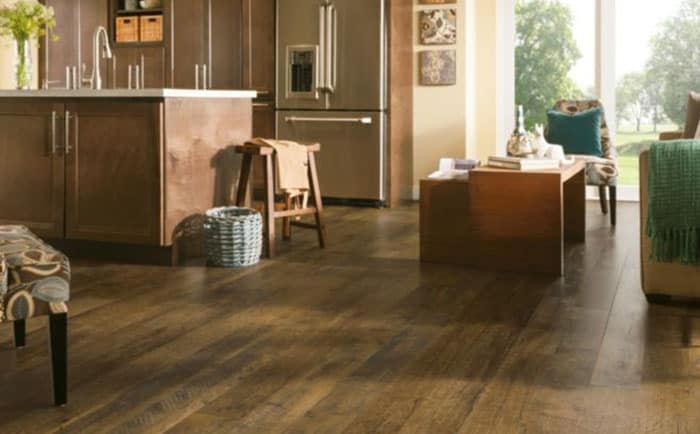
Modern laminate has come a long way over the last couple of decades and now has the ability to use ultra-realistic photo finishes and even textures that mimic the feel of the original material.
Other features available in laminate flooring include:
- Water-resistant
- Scratch-resistant
- Noise resistant
- Heated laminate flooring
RELATED: Get the tools you need for installing laminate flooring.
Costs
On average, laminate flooring can cost between $3-8 per square foot installed. About $1-3 is wrapped up in material costs, while the rest is labor.
If you are handy with a chop saw and a table saw, you might be able to DIY install laminate flooring and save some cash.
QUOTE – Click here to get an instant quote from local contractors and professional installers in your area.
5. Vinyl Flooring
Vinyl flooring is another unsung hero of design trends recently. Similar to laminate floors, vinyl flooring can look like wood, stone, concrete, or ceramic time.
Unlike laminate which is made of mostly wood, vinyl flooring is 100% plastic and has much more flexibility to it.

Cost per sf; Installed
$2-8/sf
Ease of Install
Easy
Lifespan (in yrs)
10-15
What’s To Like
- Moisture resistant. If you want a wood-look product that is resistant to moisture, it’s hard to beat a quality vinyl plank. This is one of the only wood-look products that are safe for kitchens and bathrooms.
- Easy to install. LVT (luxury vinyl tile) is also incredibly easy to install. Many vinyl planks have a peel-n-stick backing that requires minimal tools and minimal skill.
- Affordable. Vinyl flooring can bring a luxury look to any space at a fraction of the cost of its imitation material. You can get a wood-look vinyl for under $3/sf (not including install). If you’re a handy DIYer, you could redo the floors in a 1500 sf. area for under $5,000.
What’s Not So Good
- Cannot be repaired. Similar to laminate flooring, vinyl flooring also has a difficult time being repaired. Your best bet would be removing the entire plank and resetting a new piece, but be careful not to damage adjacent planks.
- May emit harmful VOCs. Because vinyl flooring is 100% plastic, there’s the chance of off-gassing or omitting harmful VOCs into your home. This is more of an issue when it’s brand new.
- Shorter lifespan. A good wood floor can last upwards of 25-50 years or longer with proper maintenance. Even with excellent maintenance, vinyl flooring is only designed to last 10-20 years before the wear layer will start to erode.
Types
Vinyl flooring is available in three distinct types:
- Plank
- Panel
- Sheet

These titles refer to the overall size of the vinyl. “Plank” style is common for wood-look vinyl and “panel” is more common for ceramic or porcelain tile looking vinyl.
Sheet vinyl may be desirable if you’re looking for vinyl with limited seams, that may also be easier to clean. Keep in mind, sheet vinyl is generally less likely to mimic wood or tile effectively, due to pattern repeat so if you’re going this route, you’ll want to be aware of how it looks in large swatches.
RELATED: Click here to check the prices on wood-look laminate flooring.
Costs
On average, vinyl flooring can cost between $2-8 per square foot installed.
Vinyl flooring is relatively inexpensive and easy to install (basically just peel and stick). Vinyl can be cut with something as simple as a pair of scissors if you need to work your way around corners, appliances, or plumbing fixtures.
QUOTE – Click here to get an instant quote from local contractors and professional installers in your area.
6. Linoleum Flooring
Linoleum flooring has a similar look to vinyl flooring, but some substantial differences when it comes to construction.
The layers of linoleum include:
Unlike vinyl, which uses a four-layer construction, linoleum uses a three-layer construction.
- Base layer: the bottom layer of linoleum, generally made of canvas, burlap, or jute
- Core layer: the pattern is inlaid throughout the entire core layer, instead of a thin image layered on top of the core (as is the case with vinyl)
- Wear layer: a thin layer that acts as a sealant to protect the core layer

Cost per sf; Installed
$2-5/sf
Ease of Install
Easy
Lifespan (in yrs)
5-15
What’s To Like
- Very durable. Traditional linoleum is extremely durable. It is hard, not flexible like vinyl tiles. In addition, because the pattern is imbedded throughout the core layer, if it happens to get damaged or chipped, it may not be as noticeable because there will be a limited change in color.
- Easy to install. The install method for linoleum is simple, even for the weekend DIYer. It is flat and easy to work with.
- Less VOCs than vinyl. Linoleum is made of more natural renewable resources, like linseed oil, which is derived from flax seeds. In comparison, vinyl is 100% plastic.
What’s Not So Good
- Can look cheap. Classic linoleum is frequently used because of its low cost, but it can also have a cheap look to it. It has a cold, hard feel to it, is frequently sourced in a basic 12×12″ tile, and can feel very “budget”.
- Easily scratches and gouges. Although it’s nice that the core layer is a consistent color, linoleum can easily scratch, gouge, chip, or crack. In addition, it can’t easily be repaired if damage does occur.
- Susceptible to moisture damage. Linoleum is water-resistant, but not waterproof. Due to its natural composition, linoleum flooring is susceptible to moisture damage. For this reason, it is not recommended as a floor type in bathrooms and sometimes using it in these locations can actually void the warranty.
Types
There are many types of linoleum, but the two biggest factors that differentiate various types are:
- How It Looks
- How It Installs
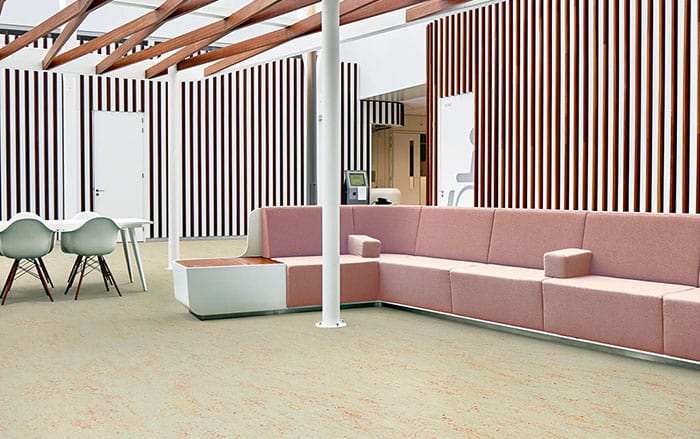
How It Looks
There are four main types of linoleum when it comes to patterns.
- Solid: as it sounds, this is a solid color
- Marble: marbles two or more colors together for a smooth, blended look
- Flecked: similar to the look of terrazzo, flecked linoleum has small flecks of different colors
- Patterns: uses dynamic and sometimes intricate patterns to enhance the look of a linoleum floor
How It Installs
- Adhesive-based: this is the most traditional install type and involves spreading a thin layer of adhesive across the entire tile(or just along the edges, depending on the manufacturer)
- Floating click-together: linoleum tiles click together and can be installed without the use of adhesives
RELATED: Check out this radiant floor heating system — good for hardwoods, laminate, vinyl, tile, stone, and more.
FAQ: Is linoleum the same as vinyl?
Linoleum vs. VCT (vinyl composite tile): Although these two products look incredible similar they actually have big differences in terms of how they are made. VCT is made from vinyl composite, which is plastic-based and uses quite a bit more harsh chemicals in its production. Linoleum is more natural and made of renewable resources including a linseed (flaxseed) core and jute backing.
Costs
On average, linoleum flooring can cost between $2-5 per square foot installed. This material can be one of the most budget-friendly flooring types currently on the market.
QUOTE – Click here to get an instant quote from local contractors and professional installers in your area.
7. Ceramic Tile Flooring
Ceramic tile flooring was a popular choice for traditional tile floors and remains one of the most used flooring options for wet-applications today. It is available in various sizes. For flooring some of the most popular sizes are 12×12 or 12×24″.
Ceramic tile is lighter and a bit more fragile than denser porcelain tile. Many times, ceramic tile makes a better application for walls rather than floors.

Cost per sf; Installed
$6-38/sf
Ease of Install
Moderate
Lifespan (in yrs)
10-20
What’s To Like
- Waterproof. A high-quality tile with a good grout job will be virtually waterproof and highly durably against water, spills, or other messes that may be tracked in from outdoors.
- Colorful. If you’re looking for a bright floor, colored glazed ceramic tile can be an excellent option. These glazed tiles are easy to clean and bring a bright splash of color to the space.
- Easy to clean. A ceramic tile floor is easy to clean and is non-porous (when glazed). This helps to protect it from whatever your environment may throw at it.
What’s Not So Good
- Prone to chips and cracks. Ceramic tile flooring may chip or crack, due to a shifting sub floor or if an item is dropped on it. Ceramic tile has a clay core with a top-layer finish. If the top is chipped, the clay core may show through and have a different look.
- Not as dense. Ceramic tile is not as dense as porcelain tile and can sometimes look cheap, depending on the specific finishes you decide to go with.
- Difficult grout lines. Although the tile is easy to clean, keeping the grout lines clean is another story. Although there are specialty brushes and cleaners on the market, grout lines can look dirty fast. To limit this, consider dark grout for your next tile project.
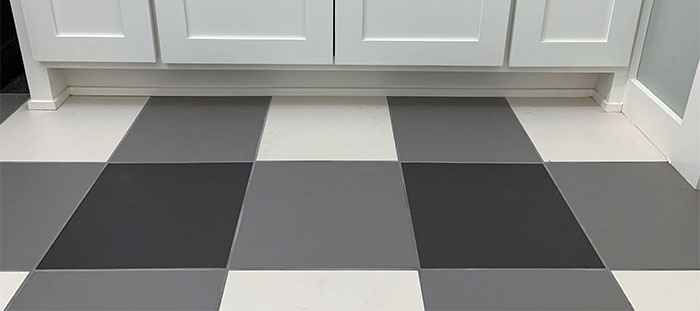
Types
When hunting for ceramic tile floors, there are two main different types you can get, each coming in various sizes:
- Glazed ceramic tile
- Unglazed ceramic tile
Glazed ceramic tile has a glossy finish and comes in a wide range of colors. You can even get ceramic tile that mimics the finish of other finishes, like marble.
Unglazed ceramic tile has a matte finish and generally has less vibrant colors. Unglazed tile has better slip-resistance and may be a better solution for areas that are often wet, like bathroom or shower floors.
Costs
On average, ceramic tile flooring can cost between $6-38 per square foot installed. You can gen ceramic tile for under $1/sf (not installed) if you just want a really basic, small format tile.
If you want something more large format, with a more intricate finish or pattern, the cost can go up to over $30/sf for material alone. Cost to install is generally around $5/sf, regardless of the look of the tile.
QUOTE – Click here to get an instant quote from local contractors and professional installers in your area.
8. Porcelain Tile Flooring
Porcelain tile is another option for a durable, dense, waterproof flooring. A porcelain tile is also made of kiln-fired clay. It is denser and heavier than traditional ceramic tile which makes it a bit more durable, when used as flooring.

Cost per sf; Installed
$8-40/sf
Ease of Install
Moderate
Lifespan (in yrs)
10-20
What’s To Like
- Durability. Because of the added density of porcelain tile, it is also quite durable. It is heavier than ceramic tile and provides a waterproof, durable flooring option for many different room types.
- Large format. Porcelain tile is available in standard tile sizes or larger format planks. Design tip: Larger format tiles tend to feel more modern, while smaller intricate tiles can feel more traditional or eclectic.
- Through-Color Body. Porcelain tiles carry the color through the body of the tile, unlike ceramic tile, which just has the color on top. This can help hide cracks or chips in the tile over tile.
What’s Not So Good
- Prone to chips and cracks. Similar to ceramic tile, porcelain tile is also prone to chips or cracks. This damage can come from a poor install, a poor substrate, or simple mistakes like dropping heavy items directly on the tile.
- Heavy. Porcelain tile can be quite a bit heavier than other flooring materials. If you’re installing the tile yourself, you may want to consider the sheer mass of this material.
Types
When hunting for ceramic tile floors, there are two main different types you can get, each coming in various sizes:
- Glazed porcelain tile
- Unglazed porcelain tile
- Digital printed porcelain tile
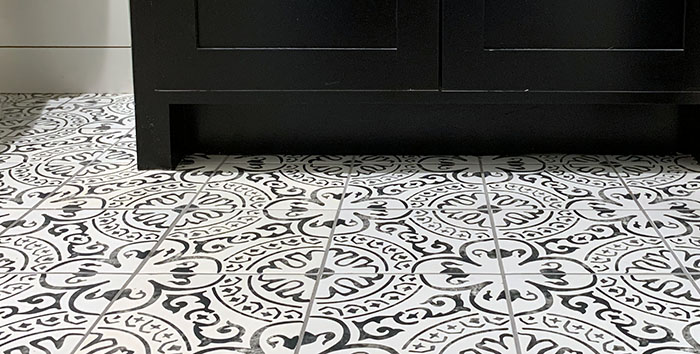
Costs
On average, porcelain tile flooring can cost between $8-40 per square foot installed. For material costs alone, porcelain tile is generally more expensive that ceramic tile, but the bulk of the cost is wrapped up in labor and install costs.
QUOTE – Click here to get an instant quote from local contractors and professional installers in your area.
9. Cork Flooring
Cork flooring is a renewable resource that uses the bark of the cork oak tree. To produce a flooring material, natural cork is ground up, compressed, and formed into sheets or tiles using resin.
It is durable and has a warmth to it that is makes it a unique and sustainable flooring type.
Similar to rubber flooring, you can buy cork in tiles or sheets.

Cost per sf; Installed
$3-8/sf
Ease of Install
Easy
Lifespan (in yrs)
10-30
What’s To Like
- Eco-friendly. This point likely helps to explain the recent rise in cork flooring. Cork is a renewable resource that comes from the bark of a cork oak tree. Since the tree is not cut down for production, the bark can reproduce and cork can be harvested from the same tree multiple times.
- Ability to refinish. Although shocking to many, you can actually sand and refinish cork flooring, similar to how you would with hardwood floors. This helps to treat scratches and give cork flooring a fresh new look, without needing to replace it.
- Softening. Both hardwood floor and cork floors are hypoallergenic, meaning that they repel airborne particles, allergens and dust from building up or hiding. But unlike hardwood, which can have a hardness and “echo effect”, cork floor have a softer feel and tend to deaden ambient noises.
What’s Not So Good
- Fading. Cork flooring can be susceptible to fading, so if you have an area with high levels of direct sunlight, cork flooring might not be the best option.
- Requires sealing. Cork floors must be sealed to help protect the tiles and protect from water damage. You can use a water-based polyurethane or another sealant. This top layer protectant will need to be reapplied every 205 years.
- Not as durable. Cork shares some of the aesthetic traits of hardwood or bamboo flooring, but what it lacks compared to these options is durability. Cork floors can easily be dented, damaged, or scratched.
Types
Cork flooring comes in two main varieties:
- Plank cork floor
- Tile cork floor
Plank cork floor is a nice option if you’d like to mimic the look of traditional hardwoods.
Tile cork floor is great if you want to mimic floor tiles or want smaller swatches of cork for easier install.
Cork Color Options
When it comes to colors, cork is a little limited. Do you like tan? If not, cork flooring might not be for you. Cork prides itself on the environmental benefits of cork and since cork is naturally derived as a tan bark, it can difficult to find darker or “black” varieties of cork flooring.
Costs
On average, cork flooring can cost between $3-8 per square foot installed. Only about $1/sf of that is wrapped up in install costs since cork is very easy to install. The bulk of the costs is wrapped up in material costs.
QUOTE – Click here to get an instant quote from local contractors and professional installers in your area.
10. Carpet Flooring
Carpet flooring is one of the most common flooring materials in residential design projects. Ripping out out, stained and / or smelly carpet can totally transform a space and turn it into a well-designed and pulled together project.
You can buy carpet in a wide range of colors and textures. It helps to deaden sound and bring in an extra layer of softness to the space.

Cost per sf; Installed
$4-12/sf
Ease of Install
Difficult
Lifespan (in yrs)
5-15
What’s To Like
- Soft underfoot. No surprises here, carpet feels good to walk on. It has an inherent softness and can really feel cozy.
- Warm. Carpet also provides some added warmth to a room. It is not cold to walk on and when you have carpet, you don’t have the added expense of excess area rugs throughout the space.
- Non-slip. Although carpet is certainly not approved for wet areas, if carpet does get wet, it can dry and be like new. (Note: This wouldn’t apply to flood situations or instances of large amounts of water. Only small instances like spot-cleaning or shampooing carpet.) In addition, kids and pets won’t lose traction when playing on carpet.
What’s Not So Good
- Wears easily. Depending on your lifestyle, traffic level, and general cleanliness carpet can wear pretty hard in certain areas. The uneven wear pattern makes it difficult to hide things from carpet.
- Holds odors and allergens. Because of the carpet fibers, carpet is notorious for holding onto foul odors (like pets and smoke) as well as indoor or outdoor allergens. This can be difficult for those who suffer from allergies as it can be hard to get carpet clean.
- Needs professional installer. It’s not so much that installing carpet is hard, as it is that it requires special tools. A good carpet install involves stretching the carpet tightly across the floor and stapling it in. This is a job that requires a bit of practice to master the technique. If installed poorly, the carpet can buckle, wrinkle and wear harshly over time.
Types
The major types of carpet can be divided into three features:
- Pile Height
- Pile Pattern
- Tile vs. Broadloom
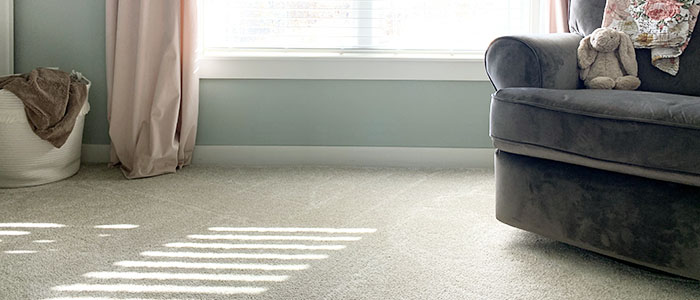
1. Pile Height
Carpet comes in high, medium, or low pile carpet. A shorter pile height will be easier to clean, but also may show stains more.
High pile carpet has a plush, cushy feel to it. Some vacuum cleans struggle cleaning high pile carpets due to not enough suction power.
2. Pile Pattern
In addition to pile height, the carpet pattern can also vary. The fibers of carpet can be designed as CUT or LOOP.
- Cut fibers look like a shag carpet — soft to the touch and blunt ends.
- Loop fibers extend from the base of the carpet, make a loop, and then return back to the base and are woven in (think of berber carpet).
- A blend of cut and loop fibers can be used to create a patterned textured carpet.
3. Tile vs. Broadloom
Carpet tiles are individual squares or planks of low pile carpet that have a rubber or composite backing. Carpet tiles can be manufactured as tiles (generally 24×24″) or larger planks (12×36″ or similar).
Arranging carpet tiles can create different patterns and styles.
For residential projects, carpet is usually sold broadloom, which means it is in a large roll with minimal seams. Broadloom carpet installs with a more uniform look, but it can be more difficult to maintain and you can’t easily replace stained areas.
Costs
On average, carpet can cost between $4-12 per square foot installed. Costs can be more or less based on the quality of carpet you buy.
The quality of carpet can be directly related to how long the carpet will last. Poor quality carpets may only last 3-7 years, while higher quality carpets can last upwards of 10-15 years, when well maintained.
Install costs accounts for about $1.50/sf while material costs make up the rest. Carpet is one material where install costs shouldn’t be vastly different regardless of how much your carpet costs.
QUOTE – Click here to get an instant quote from local contractors and professional installers in your area.
11. Concrete Flooring
Concrete flooring is a newer concept for residential design, but it’s durability and low maintenance have people eyeing it as a primary floor type throughout an entire home.

Cost per sf; Installed
$2-15/sf
Ease of Install
Difficult
Lifespan (in yrs)
10-30
What’s To Like
- Low maintenance. Concrete flooring is one of the most lost maintenance floor type you could have. Much of the maintenance is determined during the initial pour and curing process. There are limited transitions and only a few saw cuts (to prevent cracking).
- Design options. Traditional concrete flooring is gray and has a matte, somewhat unrefined finish. Modern advances in concrete provide the option of a polish concrete floor and a wide variety of stain and sealant options.
- Radiant heat. Concrete flooring provides the option of additional radiant heat coils during the construction. Radiant heat coils is an effective way to heat the concrete flooring, for a cozy and comfortable feel.
What’s Not So Good
- Prone to cracking. As many have seen, concrete cracks over time. The cracks can happen because of temperature, moisture, humidity, or settling over time. Cracks in concrete can be disguised, but not exactly repaired. Intelligent saw cuts during the construction process can help limit cracks.
- Utilitarian. Traditional concrete can also have a pretty sterile and utilitarian look in it’s natural form. It is cold, hard, and inherently uninviting. Adding radiant heating underfoot and staining or stealing the concrete can help to give it more character.
- Difficult to change. If your design goals change, it is not easy to change up the finish of sealed concrete. Concrete can be resurfaces, but this adds extra thickness to the floor which may or may not work with your existing site conditions.
Types
The two main types of concrete include unpolished and polished concrete. For residential applications, polished is generally the best option.
Within a mix of concrete, there can be nearly any aggregate, colors, dyes, or other material added in. When the concrete is polished smooth, this aggregate can be exposed for a unique look.
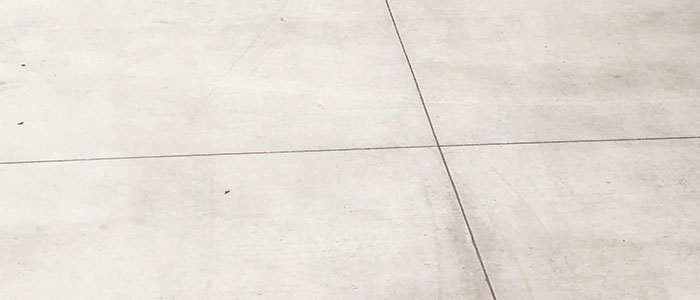
Concrete aggregate can include:
- Gravel
- Crushed stone
- Sand
- Slag
- Glass
You can add color through the use of:
- Colored stains: surface dyes the top of concrete before it is polished and sealed
- Colored dyes: dyes in the mix of concrete before it is poured can add more color variation and vibrancy to the finish look of polished concrete.
Costs
On average, concrete flooring can cost between $2-15 per square foot installed.
A basic gray polished concrete floor will tend to float lower on the price range, while adding color, pattern, or specialty aggregate can take it up to the higher price tiers.
QUOTE – Click here to get an instant quote from local contractors and professional installers in your area.
12. Rubber Flooring
Lastly, I wanted to cover rubber flooring. While rubber flooring is not a traditional flooring type in a home, it is becoming a possibility, thanks to new developments in manufacturing.
Rubber flooring is made of 100% rubber composite and can be created using different colors, patterns, or texture.

Cost per sf; Installed
$3-20/sf
Ease of Install
Easy
Lifespan (in yrs)
10-20
What’s To Like
- Easy to install. Rubber tiles are easy to install as they can be direct-glue-down or installed floating (no adhesive). Rubber can also be cut with a knife, making it a friendly material for most DIYers.
- Waterproof. Rubber is naturally non-porous and resistant to water. The one exception may be seams, where water could leak in. To avoid this, try to use sheet rubber flooring (to minimize seams) in wet applications or install a moisture barrier above the underlayment.
- Quiet. Unlike hardwoods or tile which tend to bounce sound around, rubber floors absorb sound and can really deaden extra ambient noise.
What’s Not So Good
- Slippery. Although it is pretty non-slip when dry, when rubber gets wet it can become a different story. If you plan on using rubber flooring in wet areas, you may want to consider a style that brings in some texture or pattern to reduce large areas of sitting water.
- Odor. Rubber has a highly distinctive smell that doesn’t dissipate easily. If you plan on using rubber flooring throughout your home, you’ll likely want to account for a couple-days of off-gassing and just letting the material acclimate to your space. Even then, some of the smell of rubber is not going away.

Types
When considering different types of rubber flooring, size plays a big roll in how the product is used.
- Rubber floor mats: These mats are temporary and are installed over an existing flooring to create a temporary rubber area. This is common in garage work areas or fitness spaces.
- Rubber floor tiles: Rubber tiles are easily laid like tile (minus the wet tile saw) and are perfect for DIYers. There are different colors available and you can use those colors to create patterns or design layouts.
- Rubber floor rolls: Rolls of rubber are wider sheets of flooring that come in a range of widths, depending on the distributor. Rolls are good for covering larger areas of floors, quicker and with less seams.
- Sheet rubber flooring: Sheet rubber is the largest style of pre-fab rubber you can get and is most popular in healthcare applications for its durability and cleanability.
- Poured rubber flooring: This is the most expensive style of rubber flooring, where the rubber is liquefied and poured directly onto the substrate. It is expensive, but seamless and can have a very high-end look to it.
RELATED: Looking for a rubber flooring in your garage? Check out this Defiant Oil and Grease Resistant rubber tile.
Costs
On average, rubber flooring can cost between $2-15 per square foot installed. Install prices may vary based on the type of rubber you go with. Rubber tiles are quick and easy to install and very DIY-friendly.
On the other hand, poured rubber is very expensive and would likely require a professional for a high-quality install.
QUOTE – Click here to get an instant quote from local contractors and professional installers in your area.
Should you install floors yourself or hire a professional?
So you’ve picked your floor… now what? Deciding whether or not to install flooring yourself or hire a professional can be decision that can cost or save you thousands.

To know which strategy is right for you, consider the questions below:
- Skill level – What is my current skill level in this area?
- Install difficulty – What is the level of install difficulty of the floor type I selected?
- Learning – If I don’t have the skills, can they be easily learned or is it an acquired skill?
- Time & Costs – How much time and money do I want to devote to this project?
Doing jobs yourself will certainly save you money, but it will cost you time.
If you have time to kill and don’t mind a little trial and error, DIY could be the way to go.
If the install is advanced AND you don’t already have the skills that you need, then hiring a pro is likely the best option.
Still not sure what to do?
Do you still have questions? No problem. Please drop us a comment down below.
We do our best to answer all questions within 24 hours. We’re happy to help you however we can.
